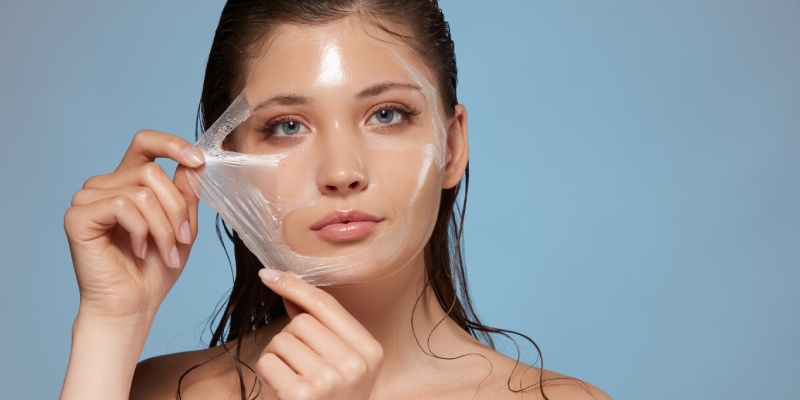Dark spots on the skin can be a persistent concern for many individuals, impacting both physical appearance and self-esteem. Fortunately, advancements in skincare have led to the development of effective solutions, with skin peels emerging as a popular choice.
In this article, we’ll explore Skin Peel for Dark Spots. We will also shed light on how Skin Peel works, its benefits, and what you need to know before considering Dark Spots treatment.
Understanding Dark Spots
Dark spots, or hyperpigmentation, can result from various factors, including sun exposure, hormonal changes, and inflammation. These spots often appear on the face, hands, or other body parts, creating an uneven skin tone and blemishes. Understanding the causes and the psychological impact of dark spots is crucial to appreciating the significance of finding an effective solution.
Importance of Addressing Dark Spots
Beyond the physical impact, dark spots can take a toll on one’s confidence and self-esteem. Achieving clear and blemish-free skin is not merely a cosmetic goal; it can significantly improve one’s overall well-being, both mentally and emotionally.
Introduction to Skin Peels
Skin peels, also known as chemical peels, are cosmetic procedures designed to address hyperpigmentation and revitalize the skin. With types ranging from superficial to deep peels, they offer a customizable solution to various skin concerns.
Types of Skin Peels
-
- Chemical Peels: Alpha Hydroxy Acids (AHAs): These peels are suitable for mild exfoliation and addressing superficial skin issues.
-
- Beta Hydroxy Acids (BHAs): BHAs penetrate deeper into the skin, making them effective for acne treatment.
-
- Enzyme Peels: These peels use natural enzymes from fruits to gently exfoliate the skin without causing irritation.
-
- Microdermabrasion: A physical exfoliation method that buffs away dead skin cells using a handheld device, revealing smoother skin.
Benefits of Skin Peel for Dark Spots

Let’s explore the notable advantages of Skin Peel for Dark Spots.
-
- Reduction of Hyperpigmentation: Effectively targets and reduces hyperpigmentation caused by sun damage, acne scars, or hormonal changes, resulting in a more even skin tone.
-
- Enhanced Skin Texture: Promotes skin cell turnover, smoothing out rough patches and improving overall texture, making it softer and more supple.
-
- Minimized Appearance of Fine Lines and Wrinkles: Stimulates collagen production, diminishing the appearance of fine lines and wrinkles, contributing to a more youthful complexion.
-
- Improved Skin Clarity: By exfoliating the top layer of skin clears away dead cells, dirt, and impurities, leaving the skin looking clearer and brighter.
-
- Treatment for Acne and Blemishes: Effectively targets and reduces acne breakouts, controls oil production, and diminishes the appearance of blemishes and acne scars.
-
- Boosted Confidence: Clearer, more even-toned skin can significantly enhance one’s self-confidence, allowing individuals to feel more comfortable and content with their appearance.
How Skin Peels Work
These peels work by applying a solution to the skin, causing exfoliation and peeling. This process removes the outer layer of damaged skin, unveiling a smoother, more even-toned complexion. The key to their success lies in targeting pigmentation, the primary factor contributing to dark spots.
Choosing the Right Peel for Dark spots
Before embarking on a journey to flawless skin, it’s crucial to make informed decisions about the type of peel that suits you best.
-
- Consultation with Dermatologist: Begin by scheduling a consultation with a dermatologist to discuss your unique skin type, concerns, and suitability for different peel types.
-
- Understanding Peel Options: Familiarize yourself with the various types of peels available, such as superficial, medium, or deep peels, and their specific benefits.
-
- Consider Skin Sensitivity: Ensure a tailored approach by discussing any skin sensitivity issues or allergies with the dermatologist to find a peel compatible with your skin.
-
- Assessing Pigmentation Severity: Evaluate the severity of pigmentation or dark spots with your dermatologist to determine the most effective peel for your condition.
-
- Health Considerations: Share your medical history or ongoing treatments to guarantee that the chosen peel aligns with your health conditions or medications.
Preparation Before the Peel

Preparing your skin adequately before a peel is essential for a successful and comfortable experience.
-
- Skincare Adjustment: Follow your dermatologist’s recommendations to adjust your skincare routine, possibly discontinuing certain products like retinol beforehand.
-
- Sun Protection: Practice diligent sun protection by using sunscreen regularly to protect the skin before the peel and afterwards during the recovery phase.
-
- Avoid Certain Products: Dermatologists might advise avoiding specific skincare products or treatments that could potentially irritate the skin before the peel.
-
- Hydration: Maintain skin hydration by drinking plenty of water and using moisturizers recommended by your dermatologist to prepare the skin.
Follow Pre-Peel Instructions: Adhere strictly to any pre-peel instructions provided by your dermatologist to ensure optimal results and minimize potential side effects.
The Peel Process
Understanding the step-by-step process of a skin peel can alleviate any concerns and ensure a smooth experience.
-
- Cleansing: The skin is thoroughly cleansed to remove any oils or impurities before the application of the peel solution.
-
- Application of Peel: The peel solution, tailored to your skin type and concerns, is applied evenly across the treatment area.
-
- Duration of Peel: The duration the peel solution remains on the skin varies depending on the type of peel, with mild tingling or mild discomfort sometimes experienced.
-
- Neutralization: Once the desired time has elapsed, the peel is neutralized to stop its action on the skin.
Post-Peel Soothing: Cooling or soothing agents might be applied to alleviate any temporary sensations or discomfort post-peel.
Recovery and Aftercare
Post-peel care is crucial for optimal results. Following a specific skincare routine and avoiding sun exposure are key elements in the recovery process. While some downtime can be expected, the long-term benefits make the temporary inconvenience worthwhile.
Results and Expectations
Approaching skin peels with realistic expectations is essential. Results are typically gradual, with noticeable improvements occurring over time. Managing expectations and understanding the transformative journey contribute to a positive experience.
Potential Side Effects
Like any cosmetic procedure, skin peels come with potential side effects. Temporary redness and irritation are common but usually subside within a few days. Understanding when to seek professional help ensures a safe and effective experience.
Comparing Skin Peels with Other Solutions

Comparing skin peels with alternative solutions provides a comprehensive view of their effectiveness. While various approaches exist, skin peels stand out for their targeted action and proven results. Understanding the advantages and disadvantages helps individuals make informed decisions.
Maintaining Results
Achieving clear skin is only the first step; maintaining results requires a long-term commitment to skincare. Implementing practices such as sun protection and a consistent skincare routine contributes to preserving the benefits of the skin peel.
Conclusion
A skin peel for dark spots is a viable and effective solution for achieving blemish-free skin. By understanding the process, managing expectations, and following proper aftercare, individuals can embark on a journey to renewed confidence and a radiant complexion.
FAQs
Is a skin peel suitable for all skin types?
Skin peels are customizable, but it’s crucial to consult with a dermatologist to determine suitability for your specific skin type.
What types of skin peels are available for dark spots?
Various types of peels, including superficial, medium, and deep peels, can be used to target dark spots. Your dermatologist will recommend the appropriate peel based on the depth of pigmentation.
Are skin peels painful?
Sensations during the peel may include tingling or mild discomfort, but pain is typically minimal.
Can I use makeup after undergoing a skin peel for dark spots?
It’s advisable to avoid makeup immediately after a peel to allow the skin to heal. Your dermatologist will provide specific guidelines on when it’s safe to resume using cosmetics.
What is the typical timeframe for observing improvements in dark spots after undergoing a skin peel?
Results are typically gradual, with visible improvements occurring over several weeks. Consistency in post-peel care and adherence to a recommended skincare routine contribute to long-term success.
